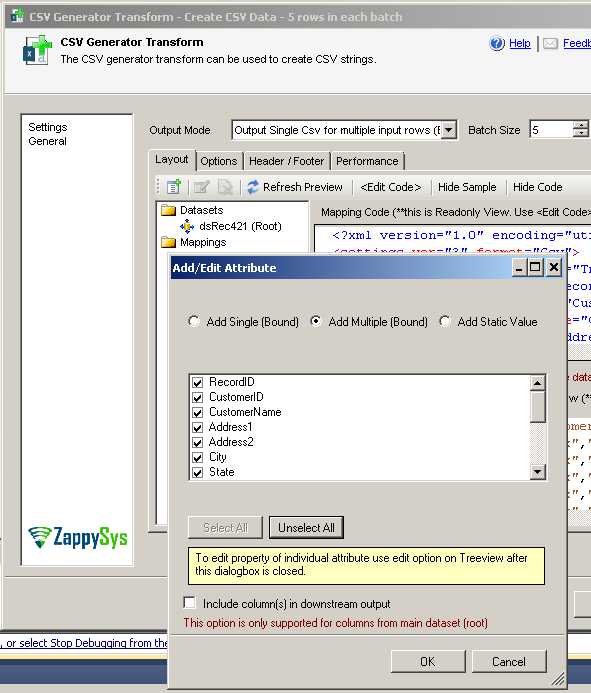

For each spike, you define the start end, the end date, and the multiplication factor.ĬustomerActivity : contains the configuration for customer start/end date OneTimeSpikes: set of spikes with a fixed start and end date. For each spike, you define the start day, the end day, and the multiplication factor.
#Csv data generator plus#
The delivery date is computed by adding one day plus a random number generated using the distribution built from this parameter.Ĭountr圜urrency: table mapping Country to CurrencyĪnnualSpikes : set of periods where orders show a spike. OnlinePerCent: (double) distribution of the percentage of orders sold online, over the orders total.ĭeliveryDateLambdaWeights: (double) distribution of the days for delivery. The first element is the weight of rows with a discount of 0%, the second element is the weight of rows with a discount of 1%, and so on. The first element is the weight of rows with quantity=1, the second element is the weight of rows with quantity=2, and so on.ĭiscountWeights: (double) distribution of the discounts applied to order rows. OrderQuantityWeights: (double) distribution of the quantity applied to each order row.

The first element is the weight of orders with one row, the second is the weight of orders with two rows.

OrderRowsWeights: (double) distribution of the number of rows per order. The first day is Sunday.ĭayRandomness: (double) percentage of randomness add to days, to avoid having a too-perfect curve over time. WeekDaysFactor: (double – length 7) weight multiplication factor for each day of the week. It covers the entire YearsCount period.ĭaysWeightAddSpikes: (bool) if set to false, annual spikes are ignored. If > 0, customers.rpt file is ignored and a number of fake customers are generated.ĭaysWeightConstant: (bool) if set to true, the configuration about days is ignored.ĭaysWeightPoints, DaysWeighValues: (double) points for interpolating the curve of distribution of orders over time. Data before CutDateBefore and after CutDateAfter is removedĬustomerFakeGenerator: (int) number of fake customers. Orders are distributed over the years.ĬutDateBefore, CutDateAfter: (datetime optional parameters) the 2 parameters allow to create data starting from a day different from January 1st and ending on a date different from December 31st. YearsCount: (int) total number of years generated. StartDT: (datetime) date of the first order. OrdersCount: (int) total number of orders to be generated. This file contains the main configuration of the data generator. data.xlsx : static data (products, categories, …) and their configuration (distribution, weights, …).Usage: databasegenerator.exe inputfolder outputfolder configfile After executing, the working folder also contains generated output data files and logs. It requires a working folder to run on, containing a configuration file and data input files. The DatabaseGenerator.exe is a command-line application, running on. The DatabaseGenerator.exe is a tool to generate orders for the Contoso data model in order to provide demo data.


 0 kommentar(er)
0 kommentar(er)
